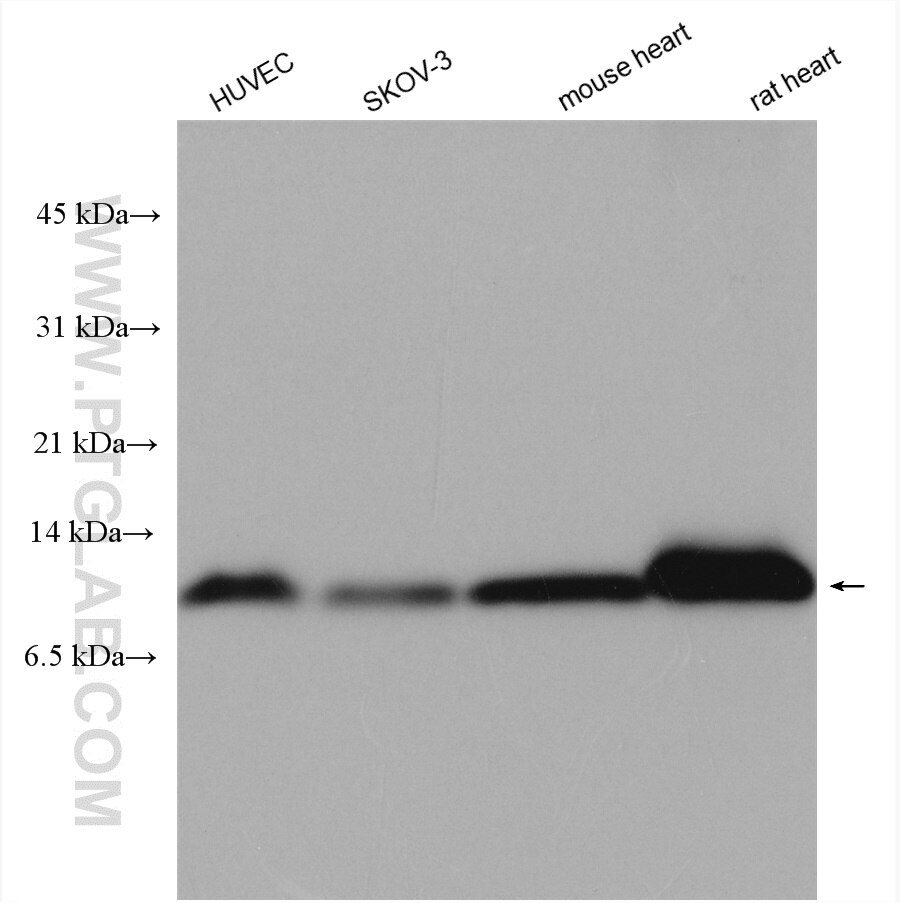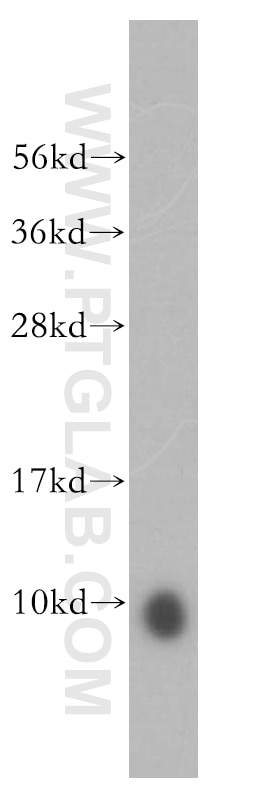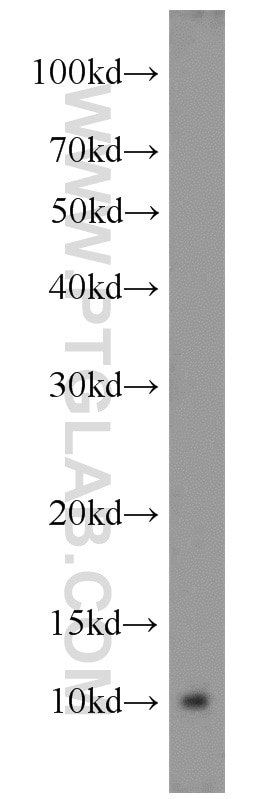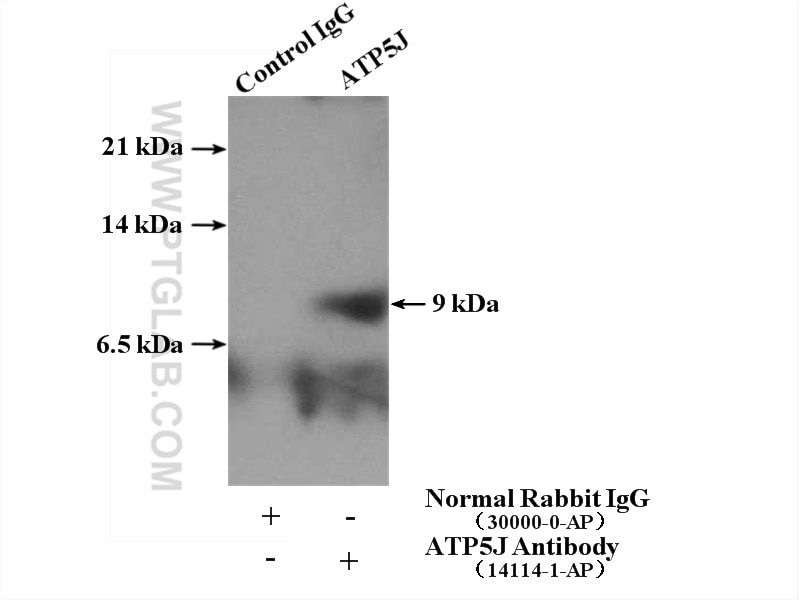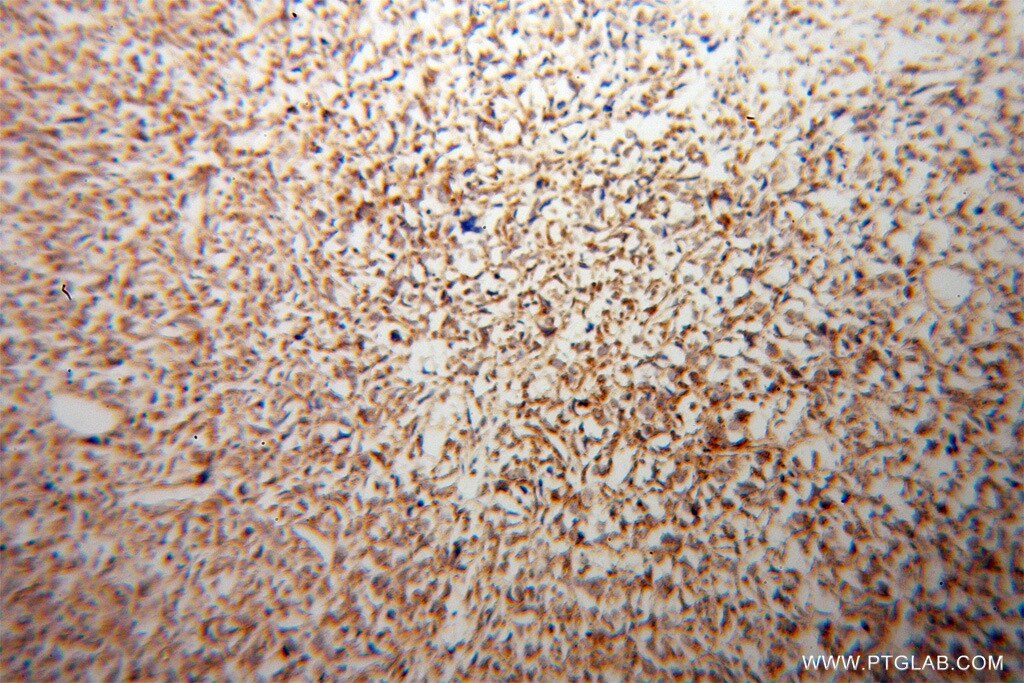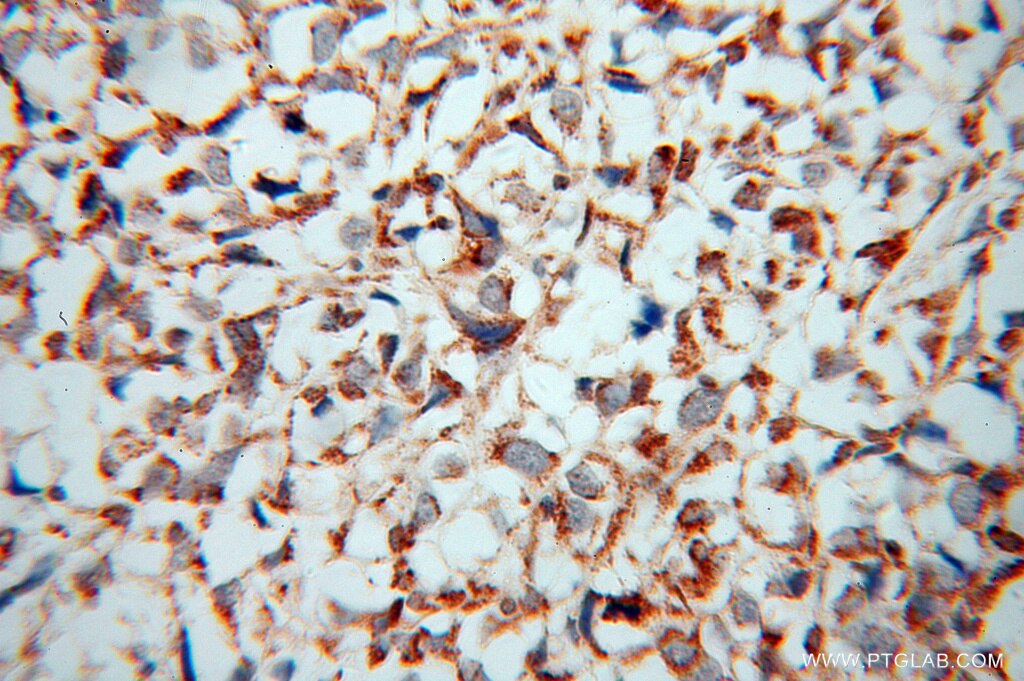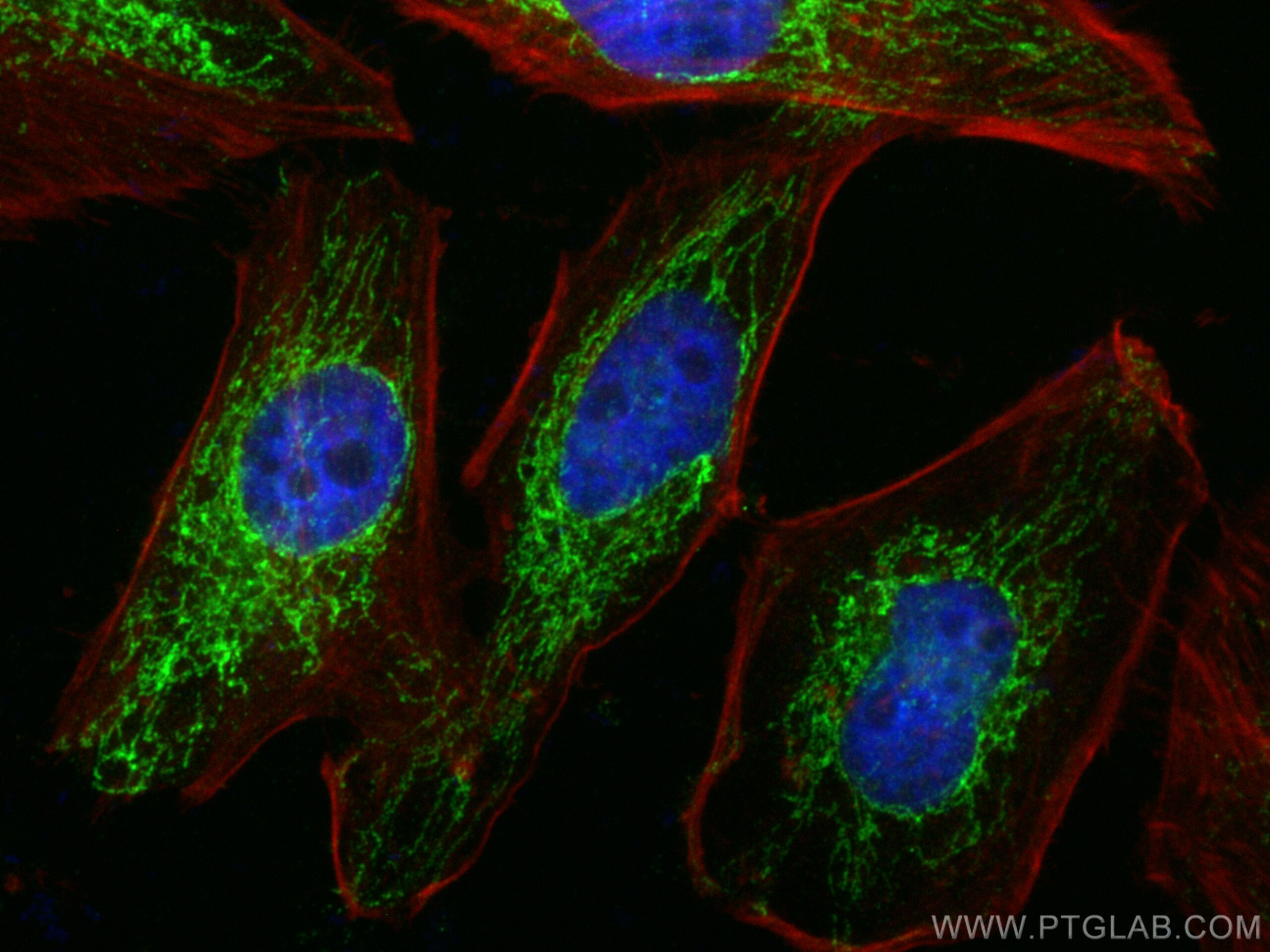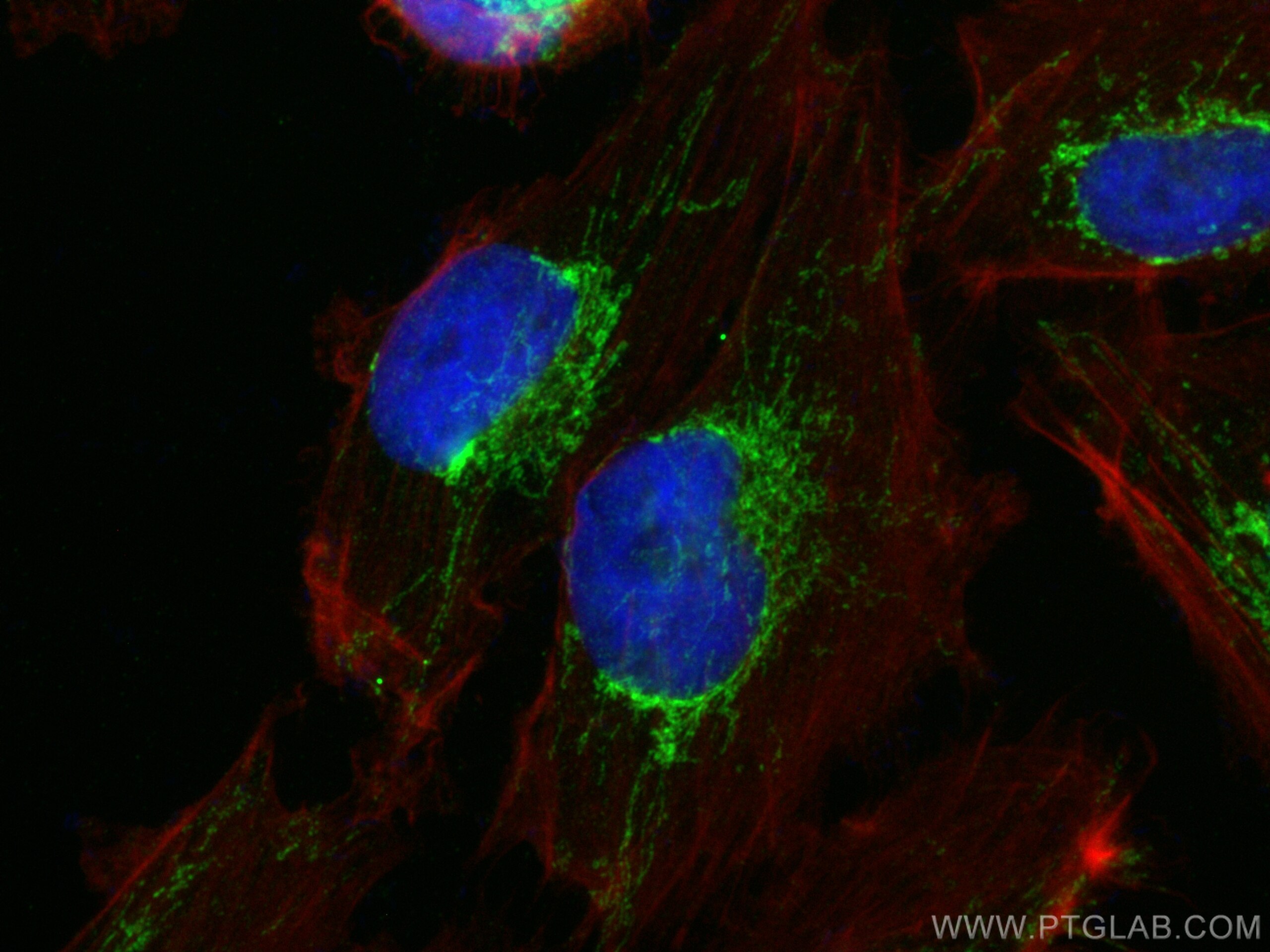Anticorps Polyclonal de lapin anti-ATP5J
ATP5J Polyclonal Antibody for WB, IHC, IF/ICC, IP, ELISA
Hôte / Isotype
Lapin / IgG
Réactivité testée
Humain, rat, souris et plus (1)
Applications
WB, IHC, IF/ICC, IP, ELISA
Conjugaison
Non conjugué
N° de cat : 14114-1-AP
Synonymes
Galerie de données de validation
Applications testées
| Résultats positifs en WB | cellules HUVEC, cellules SKOV-3, tissu cardiaque humain, tissu hépatique de souris, tissus cardiaques de rat, tissus cardiaques de souris |
| Résultats positifs en IP | cellules HEK-293 |
| Résultats positifs en IHC | tissu d'ostéosarcome humain il est suggéré de démasquer l'antigène avec un tampon de TE buffer pH 9.0; (*) À défaut, 'le démasquage de l'antigène peut être 'effectué avec un tampon citrate pH 6,0. |
| Résultats positifs en IF/ICC | cellules HeLa, cellules U-251 |
Dilution recommandée
| Application | Dilution |
|---|---|
| Western Blot (WB) | WB : 1:500-1:2000 |
| Immunoprécipitation (IP) | IP : 0.5-4.0 ug for 1.0-3.0 mg of total protein lysate |
| Immunohistochimie (IHC) | IHC : 1:20-1:200 |
| Immunofluorescence (IF)/ICC | IF/ICC : 1:200-1:800 |
| It is recommended that this reagent should be titrated in each testing system to obtain optimal results. | |
| Sample-dependent, check data in validation data gallery | |
Applications publiées
| WB | See 4 publications below |
Informations sur le produit
14114-1-AP cible ATP5J dans les applications de WB, IHC, IF/ICC, IP, ELISA et montre une réactivité avec des échantillons Humain, rat, souris
| Réactivité | Humain, rat, souris |
| Réactivité citée | rat, Humain, Lapin, souris |
| Hôte / Isotype | Lapin / IgG |
| Clonalité | Polyclonal |
| Type | Anticorps |
| Immunogène | ATP5J Protéine recombinante Ag5263 |
| Nom complet | ATP synthase, H+ transporting, mitochondrial F0 complex, subunit F6 |
| Masse moléculaire calculée | 13 kDa |
| Poids moléculaire observé | 9 kDa |
| Numéro d’acquisition GenBank | BC066310 |
| Symbole du gène | ATP5J |
| Identification du gène (NCBI) | 522 |
| Conjugaison | Non conjugué |
| Forme | Liquide |
| Méthode de purification | Purification par affinité contre l'antigène |
| Tampon de stockage | PBS with 0.02% sodium azide and 50% glycerol |
| Conditions de stockage | Stocker à -20°C. Stable pendant un an après l'expédition. L'aliquotage n'est pas nécessaire pour le stockage à -20oC Les 20ul contiennent 0,1% de BSA. |
Informations générales
ATP5J, also known as coupling factor 6 (CF6), is a soluble integral component of mitochondrial ATP synthase. Mitochondrial ATP synthase is a multi-subunit membrane-bound enzyme that catalyzes the synthesis of ATP by utilizing a proton electrochemical gradient. It consists of three domains, namely the extrinsic and intrinsic membrane domains (F1 and F0, respectively) joined by a stalk. CF6 is one of the subunits in the stalk and an essential component for energy transduction. Recently CF6 has also been reported to play a crucial role in the development of INS resistance and hypertension. CF6 is first synthesized as an immature form in the cytosol, then transported to the mitochondria by an import signal peptide and becomes an active form with the signal peptide cleaved. Western blot analysis of CF6 demonstrates a single band around 9 kDa to 12 kDa in various tissues including heart, liver, brain and HUVEC (human umbilical vein endothelial cells).
Protocole
| Product Specific Protocols | |
|---|---|
| WB protocol for ATP5J antibody 14114-1-AP | Download protocol |
| IHC protocol for ATP5J antibody 14114-1-AP | Download protocol |
| IF protocol for ATP5J antibody 14114-1-AP | Download protocol |
| IP protocol for ATP5J antibody 14114-1-AP | Download protocol |
| Standard Protocols | |
|---|---|
| Click here to view our Standard Protocols |
Publications
| Species | Application | Title |
|---|---|---|
Front Endocrinol (Lausanne) Androgen Excess Induced Mitochondrial Abnormality in Ovarian Granulosa Cells in a Rat Model of Polycystic Ovary Syndrome. | ||
Arch Pharm Res Overexpressing microRNA-203 alleviates myocardial infarction via interacting with long non-coding RNA MIAT and mitochondrial coupling factor 6. | ||
J Proteomics Congenital cataracts affect the retinal visual cycle and mitochondrial function: A multi-omics study of GJA8 knockout rabbits | ||
Adv Sci (Weinh) Phosphorylation of POU3F3 Mediated Nuclear Translocation Promotes Proliferation in Non-Small Cell Lung Cancer through Accelerating ATP5PF Transcription and ATP Production | ||
Proc Natl Acad Sci U S A The mitochondrial ATP synthase is a negative regulator of the mitochondrial permeability transition pore |
Avis
The reviews below have been submitted by verified Proteintech customers who received an incentive for providing their feedback.
FH P (Verified Customer) (05-16-2024) | Good
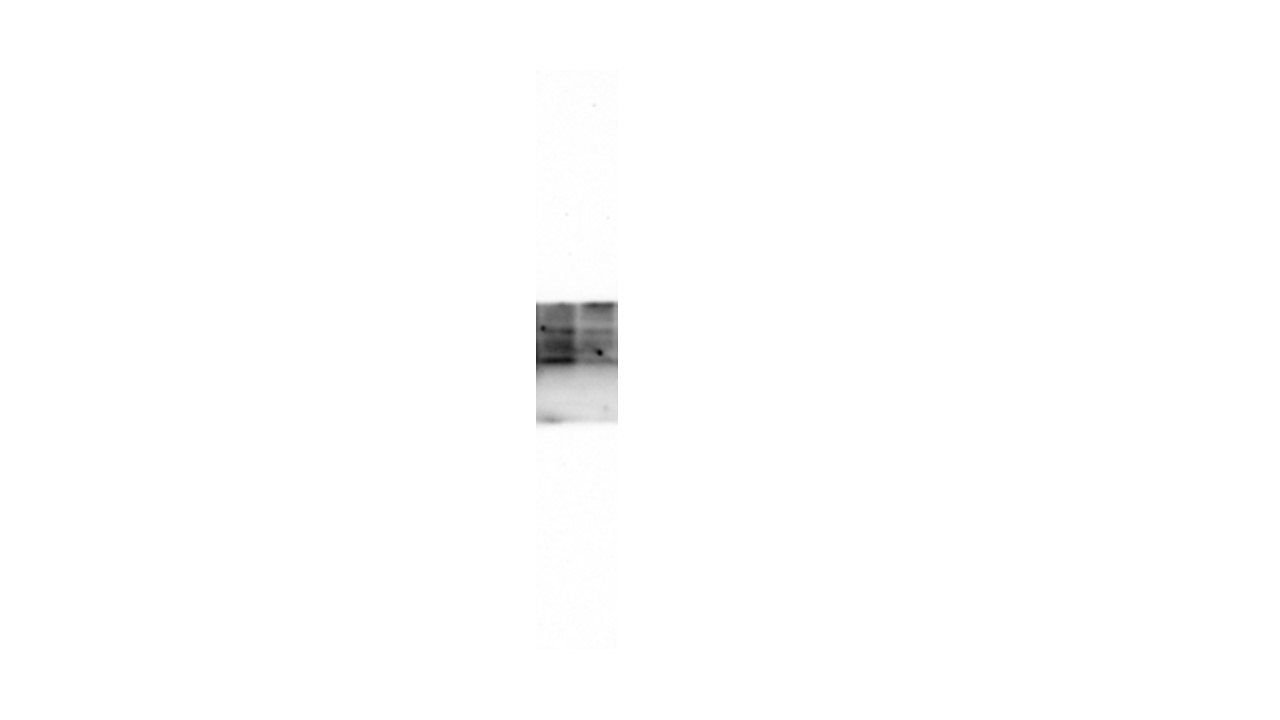 |
